Abstract
Phosphonoacetic acid specifically inhibited human cytomegalovirus DNA synthesis in virus-infected human fibroblasts as detected by virus-specific nucleic acid hybridization. Inhibition was reversible; viral DNA synthesis resumed upon the removal of the drug. The compound partially inhibited DNA synthesis of host cells in the log phase of growth but had little effect on confluent cells. Studies of partially purified enzymes indicated that phosphonoacetic acid specifically inhibited virus-induced DNA polymerase and had only a slight effect on normal host cell enzymes. The drug was shown to interact directly with virus-induced enzyme but not with the template-primers.
Full text
PDF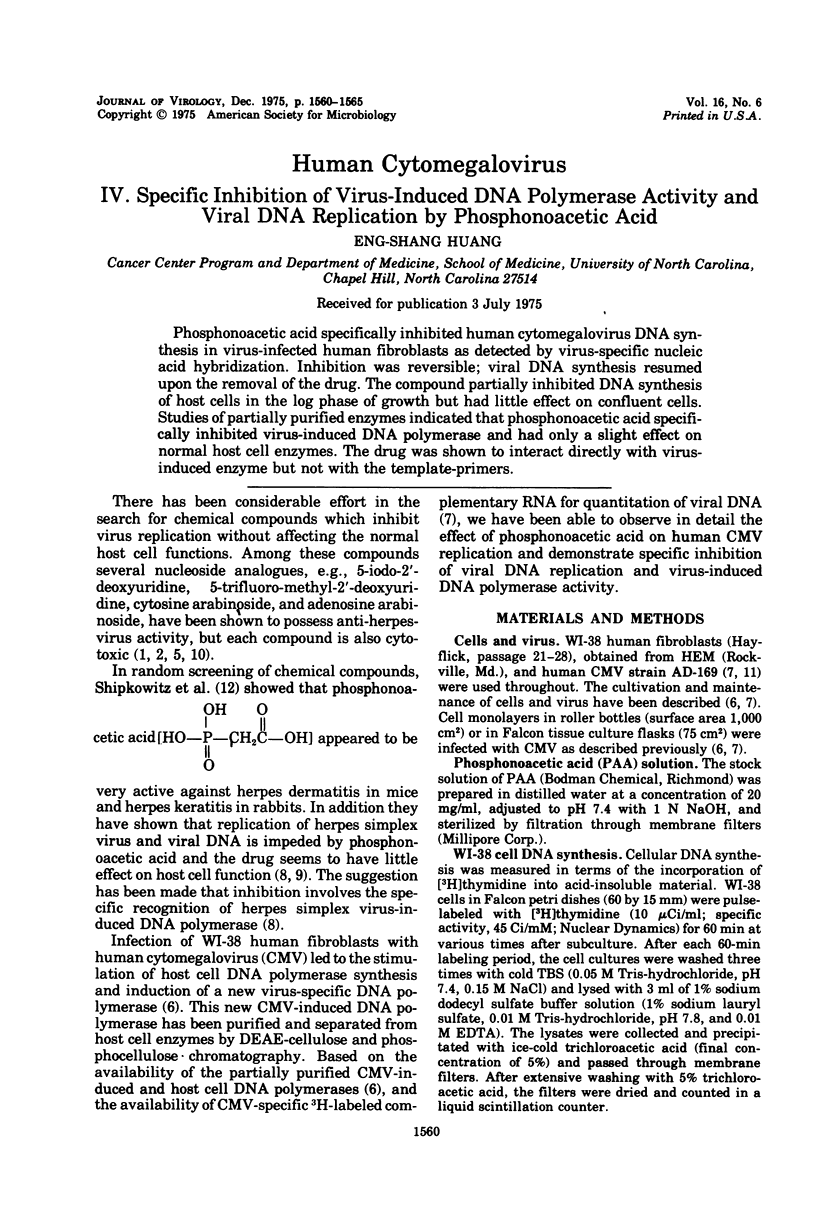
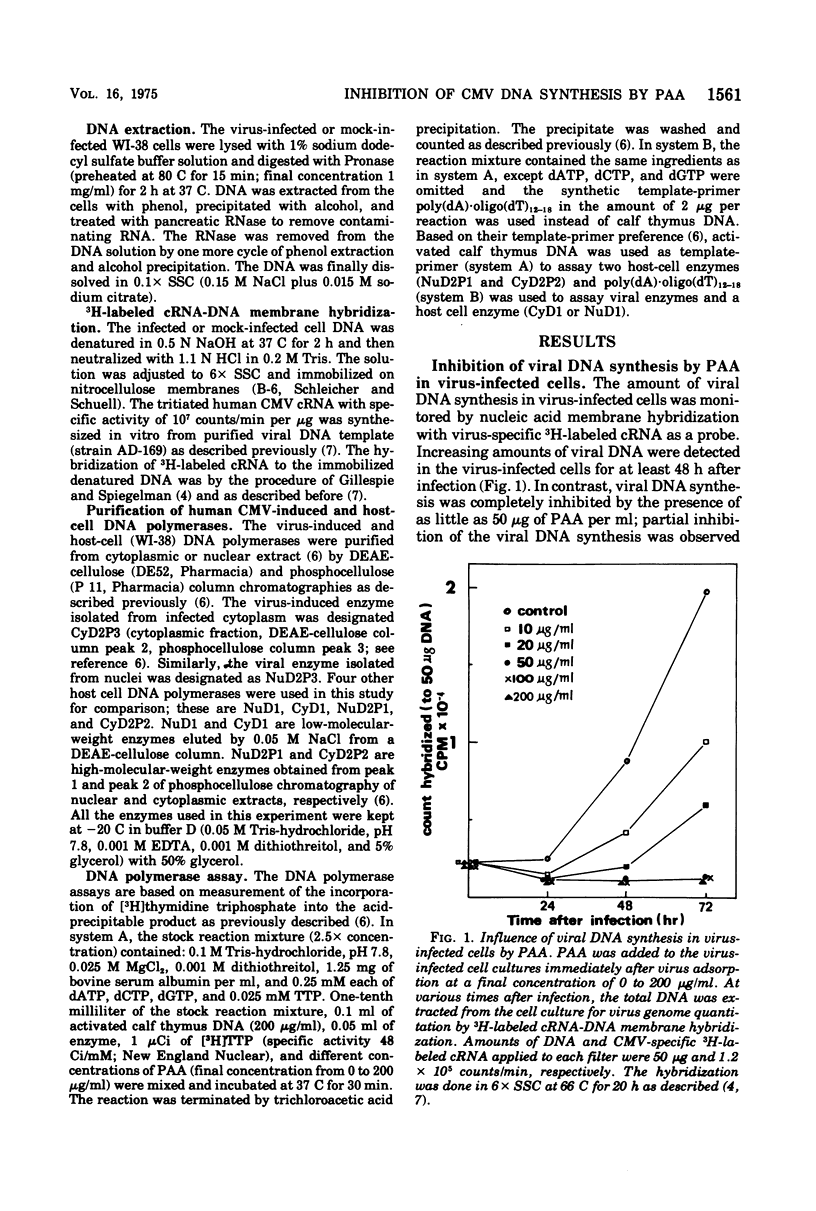
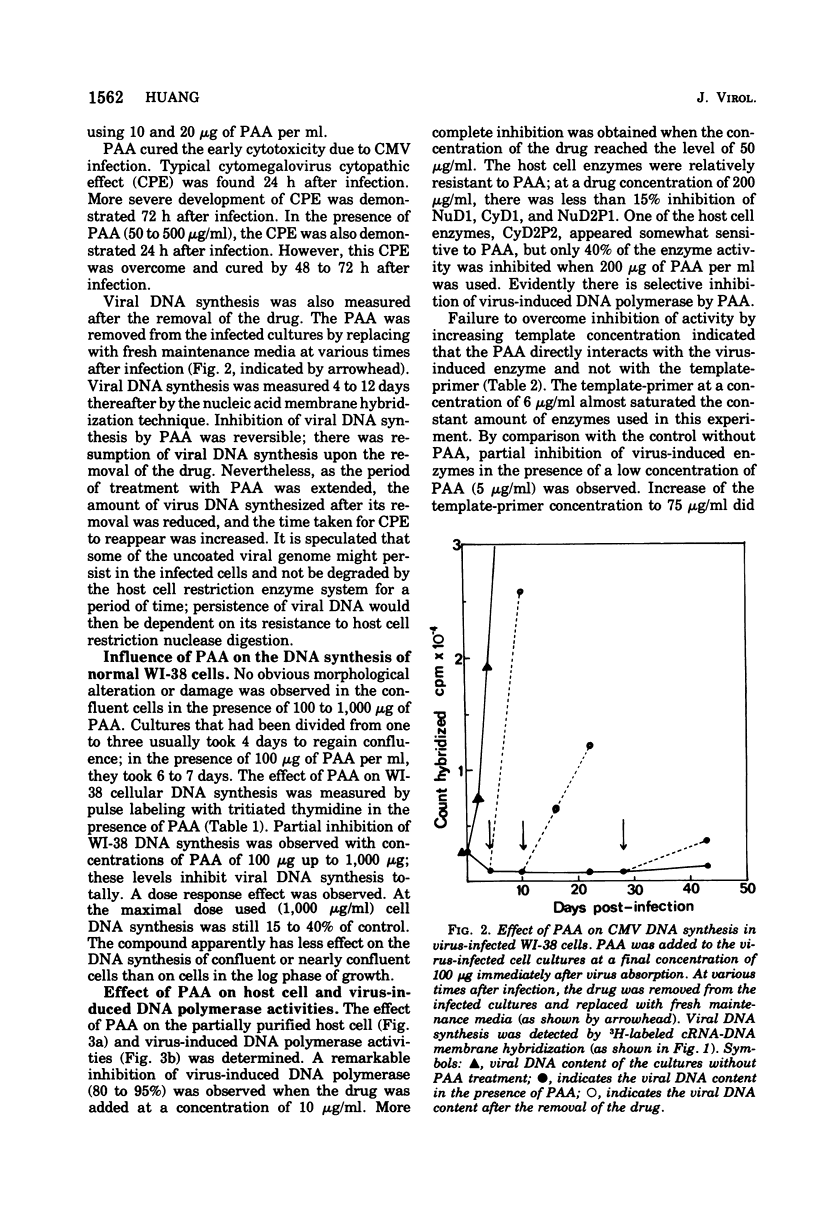
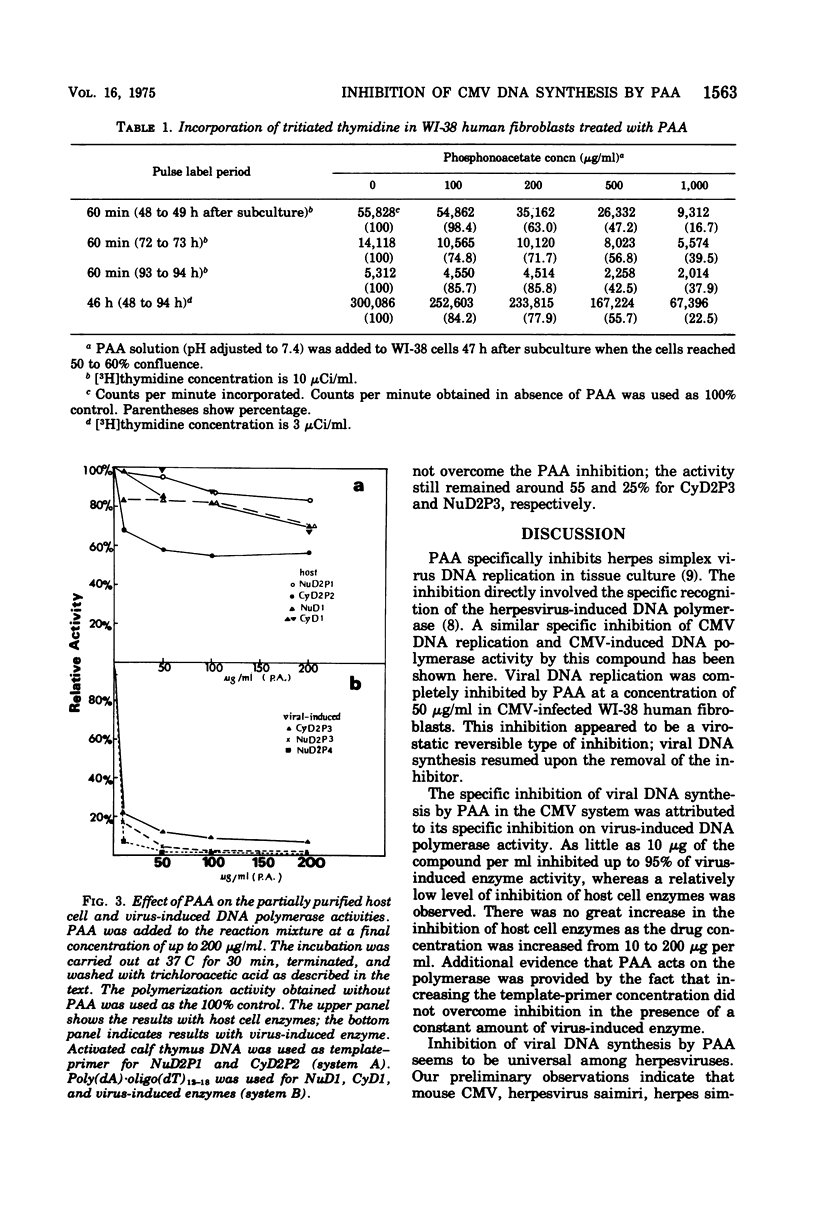
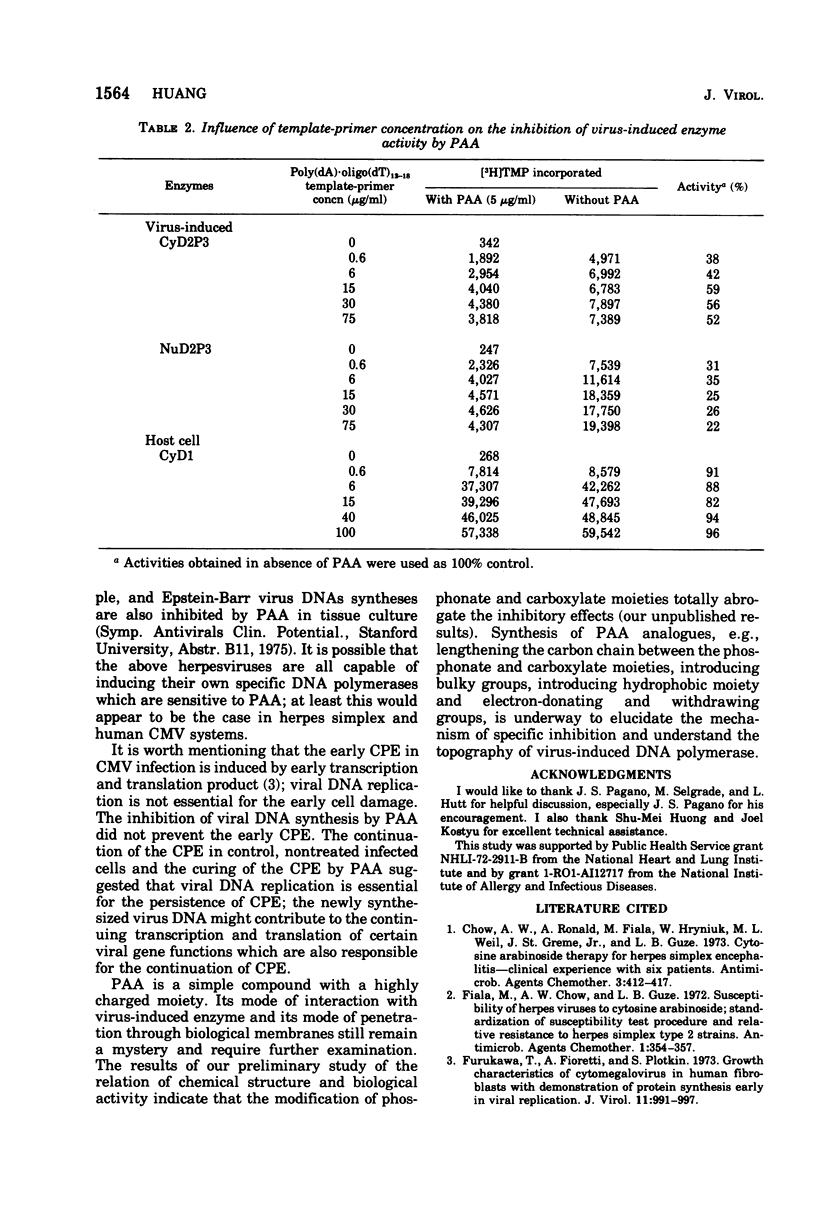
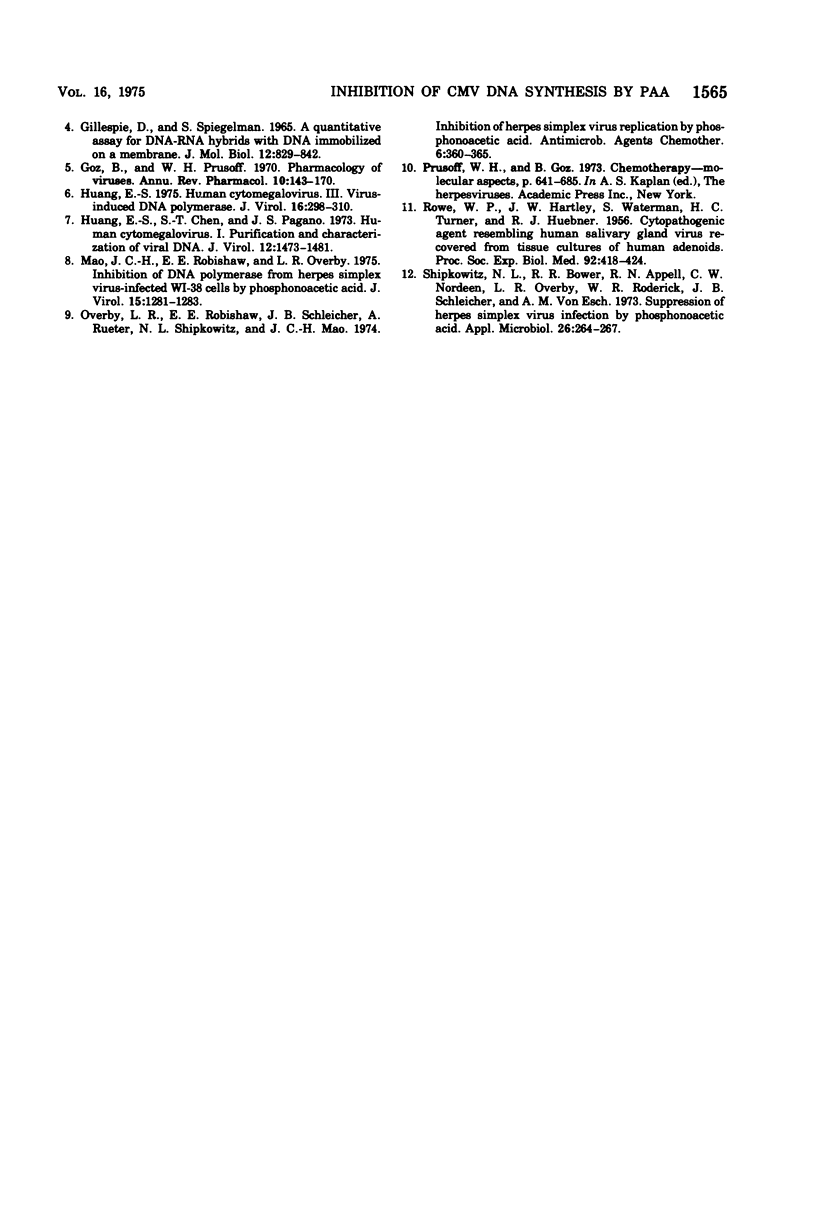
Selected References
These references are in PubMed. This may not be the complete list of references from this article.
- Chow A. W., Roland A., Fiala M., Hryniuk W., Weil M. L., Geme J. S., Jr, Guze L. B. Cytosine arabinoside therapy for herpes simplex encephalitis--clinical experience with six patients. Antimicrob Agents Chemother. 1973 Mar;3(3):412–417. doi: 10.1128/aac.3.3.412. [DOI] [PMC free article] [PubMed] [Google Scholar]
- Fiala M., Chow A., Guze L. B. Susceptibility of herpesviruses to cytosine arabinoside: standardization of susceptibility test procedure and relative resistance of herpes simplex type 2 strains. Antimicrob Agents Chemother. 1972 Apr;1(4):354–357. doi: 10.1128/aac.1.4.354. [DOI] [PMC free article] [PubMed] [Google Scholar]
- Furukawa T., Fioretti A., Plotkin S. Growth characteristics of cytomegalovirus in human fibroblasts with demonstration of protein synthesis early in viral replication. J Virol. 1973 Jun;11(6):991–997. doi: 10.1128/jvi.11.6.991-997.1973. [DOI] [PMC free article] [PubMed] [Google Scholar]
- Gillespie D., Spiegelman S. A quantitative assay for DNA-RNA hybrids with DNA immobilized on a membrane. J Mol Biol. 1965 Jul;12(3):829–842. doi: 10.1016/s0022-2836(65)80331-x. [DOI] [PubMed] [Google Scholar]
- Goz B., Prusoff W. H. Pharmacology of viruses. Annu Rev Pharmacol. 1970;10:143–170. doi: 10.1146/annurev.pa.10.040170.001043. [DOI] [PubMed] [Google Scholar]
- Huang E. S., Chen S. T., Pagano J. S. Human cytomegalovirus. I. Purification and characterization of viral DNA. J Virol. 1973 Dec;12(6):1473–1481. doi: 10.1128/jvi.12.6.1473-1481.1973. [DOI] [PMC free article] [PubMed] [Google Scholar]
- Huang E. S. Human cytomegalovirus. III. Virus-induced DNA polymerase. J Virol. 1975 Aug;16(2):298–310. doi: 10.1128/jvi.16.2.298-310.1975. [DOI] [PMC free article] [PubMed] [Google Scholar]
- Mao J. C., Robishaw E. E., Overby L. R. Inhibition of DNA polymerase from herpes simplex virus-infected wi-38 cells by phosphonoacetic Acid. J Virol. 1975 May;15(5):1281–1283. doi: 10.1128/jvi.15.5.1281-1283.1975. [DOI] [PMC free article] [PubMed] [Google Scholar]
- Overby L. R., Robishaw E. E., Schleicher J. B., Rueter A., Shipkowitz N. L., Mao J. C. Inhibition of herpes simplex virus replication by phosphonoacetic acid. Antimicrob Agents Chemother. 1974 Sep;6(3):360–365. doi: 10.1128/aac.6.3.360. [DOI] [PMC free article] [PubMed] [Google Scholar]
- ROWE W. P., HARTLEY J. W., WATERMAN S., TURNER H. C., HUEBNER R. J. Cytopathogenic agent resembling human salivary gland virus recovered from tissue cultures of human adenoids. Proc Soc Exp Biol Med. 1956 Jun;92(2):418–424. [PubMed] [Google Scholar]
- Shipkowitz N. L., Bower R. R., Appell R. N., Nordeen C. W., Overby L. R., Roderick W. R., Schleicher J. B., Von Esch A. M. Suppression of herpes simplex virus infection by phosphonoacetic acid. Appl Microbiol. 1973 Sep;26(3):264–267. doi: 10.1128/am.26.3.264-267.1973. [DOI] [PMC free article] [PubMed] [Google Scholar]


